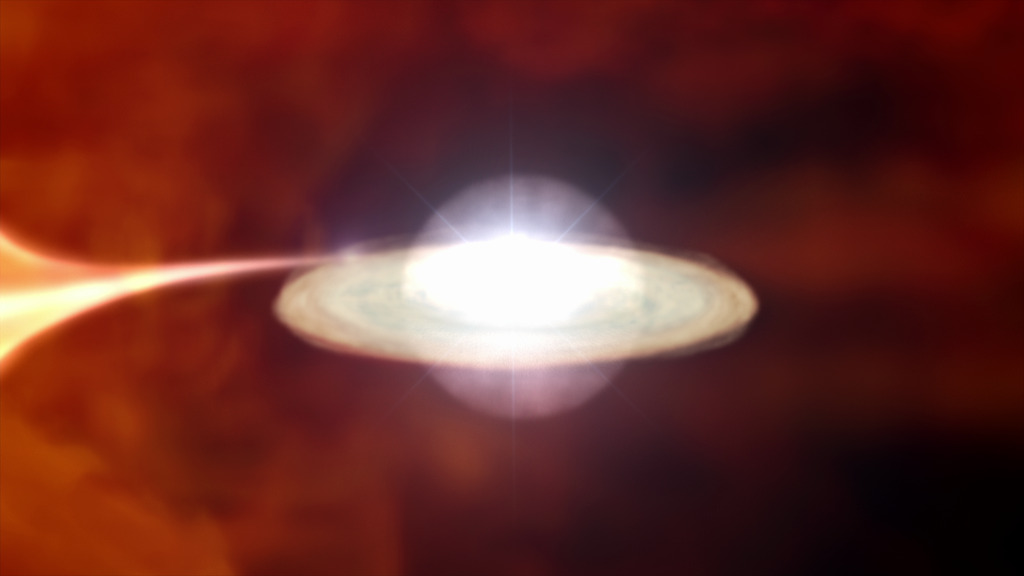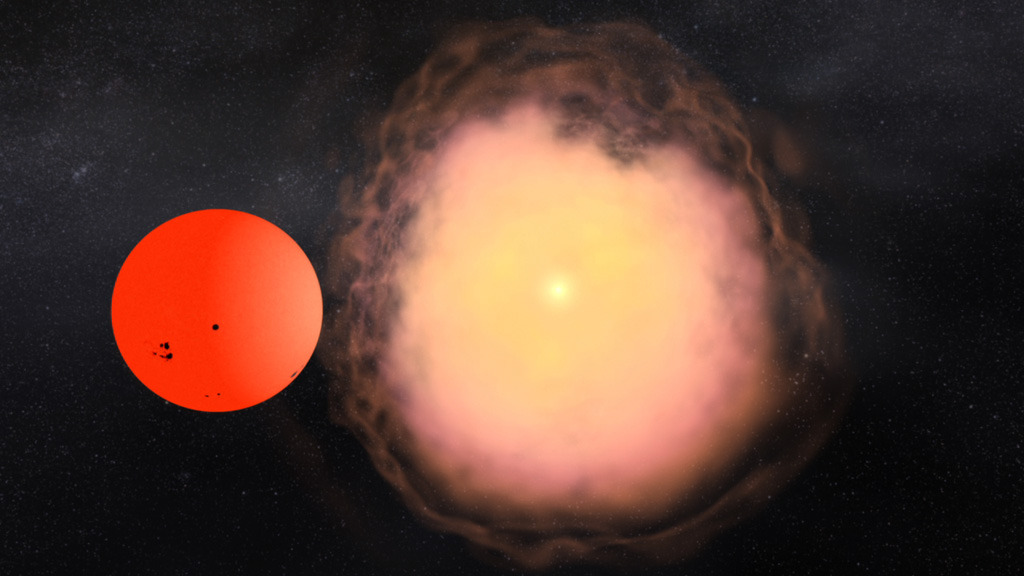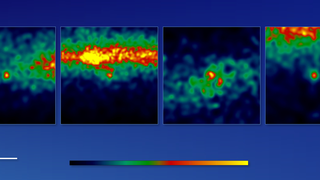Fermi Sees a Nova
NASA's Fermi Gamma-ray Space Telescope has detected gamma-rays from a nova for the first time. The finding stunned observers and theorists alike because it overturns a long-standing notion that novae explosions lack the power for such high-energy emissions.
In March, Fermi's Large Area Telescope (LAT) detected gamma rays — the most energetic form of light - from the nova for 15 days. Scientists believe that the emission arose as a million-mile-per-hour shock wave raced from the site of the explosion. A nova is a sudden, short-lived brightening of an otherwise inconspicuous star. The outburst occurs when a white dwarf in a binary system erupts in an enormous thermonuclear explosion.
"In human terms, this was an immensely powerful eruption, equivalent to about 1,000 times the energy emitted by the sun every year," said Elizabeth Hays, a Fermi deputy project scientist at NASA's Goddard Space Flight Center in Greenbelt, Md. "But compared to other cosmic events Fermi sees, it was quite modest. We're amazed that Fermi detected it so strongly." More information here.
Watch V407 Cyg go nova! In this animation, gamma rays (magenta) arise when accelerated particles in the explosion's shock wave crash into the red giant's stellar wind.
For More Information
Credits
Please give credit for this item to:
NASA/Conceptual Image Lab/Goddard Space Flight Center
-
Animator
- Walt Feimer (HTSI)
-
Producer
- Scott Wiessinger (UMBC)
-
Writer
- Francis Reddy (SPSYS)
Release date
This page was originally published on Thursday, August 12, 2010.
This page was last updated on Wednesday, May 3, 2023 at 1:54 PM EDT.


